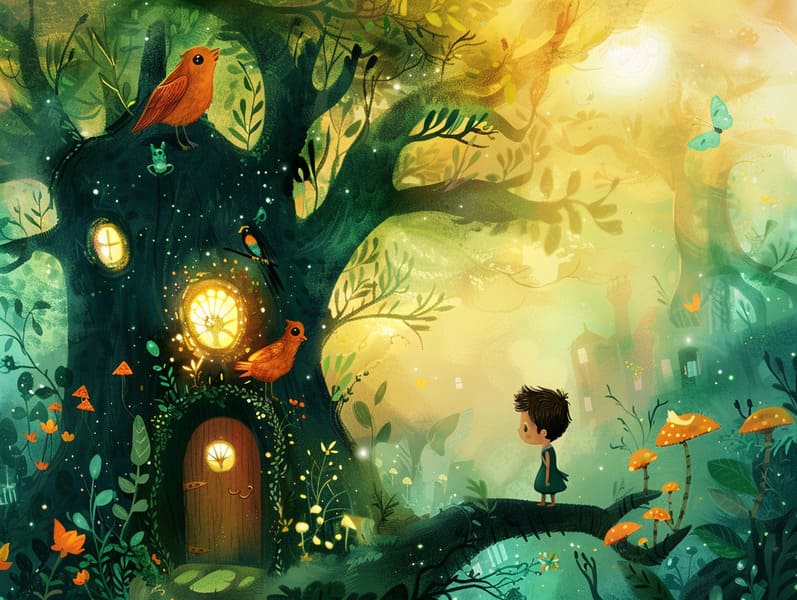Exploring the Roots of Vintage Fairy Tales and Its Perpetual Appeal.
Exploring the Roots of Vintage Fairy Tales and Its Perpetual Appeal.
Blog Article

Popular fairy tales have historical significance. These stories have been transmitted from one generation to the next centuries before they were ever recorded. They sprang from a variety of civilizations, including Eastern traditions. They were initially told among adults, often carrying themes and messages reflective of the societal norms and beliefs of the time.
Jacob and Wilhelm Grimm, Jacob and Wilhelm (the Grimm brothers), were among the first to gather and publish many of these beloved fairy tales. Their published works, "Grimm's Fairy Tales," included classics like "Cinder Maid," "Hansel and Gretel," and "Little Snow White," which have since become hallmarks in the world of beloved fairy tales. Similarly, H. C. Andersen's fanciful tales, such as "The Sea Maid," and "The Little Duckling," have enchanted hearts worldwide, cementing their place in the pantheon of famous fairy tales.
Though they are centuries old, fairy tales remain as applicable as ever, especially as kids' bedtime tales. These magical stories are now available in various formats, including vibrantly illustrated books, whimsical animations, and digital storybooks.
Their continued relevance can be ascribed to several fascinating points:
Moral Lessons: Traditional fairy tales often provide important moral lessons. Tales like "The Shepherd Boy and the Wolf" teach the importance of honesty, while "The Tortoise and the Hare" stress the values of perseverance and modesty. These narratives offer children clear distinctions between correct and incorrect, shaping their moral compass in a gentle yet deep way.
Sympathy and Perception: Old fairy tales frequently portray heroes facing trials and tribulations, stimulating young readers to empathize with their struggles and encourage their triumphs. For instance, "Beauty and Her Beast" shows us the significance of valuing inner qualities to acknowledge the true nature of a soul, enhancing compassion and recognition.
Cultural Appreciation: Many traditional fairy tales are interwoven with the cultural contexts from which they bloomed. Delving into these tales can provide intriguing perspectives into different social structures, cultivating a sense of cultural awareness and discernment.
Imagination and Innovation: The imaginative elements in fairy tales—enchanted objects—encourage children’s fantasy worlds. These fairy tales bring readers to extraordinary realms, enlivening fantastical thinking and a sense of astonishment that endures read more a lifetime.
Timeless fairy tales are not only mesmerizing but also informative. They function as magical tools in enhancing various cognitive and affective skills in kids. When old fairy tales are recited, they develop language development by introducing new linguistic elements and complex sentence structures. This practice also promotes hearing perception and attentiveness, as young readers remain attentive, anticipating to see what happens next.
Furthermore, talking about the themes and characters of ancient fairy tales can nurture reasoning skills and thinking skills. The young learn to find patterns, forecast, and know cause and effect. These contemplations also encourage little ones convey their thoughts and feelings, advancing their emotional intelligence.
In today’s high-tech era, the proliferation of web-based fairy tales has made these fairy tales more available than ever. Online platforms and programs offer ample collections of timeless fairy tales that can be seen or played anytime, anywhere. Fairy tales read aloud are particularly popular, featuring an charming way for children to take part in these charming stories. Sound books and read-out-loud stories take characters and settings to life, often accompanied by spellbinding sound effects and melodies that intensify the storytelling journey.
The timeless fascination of old fairy tales lies in their ability to adapt to changing times while preserving their key morals. Contemporary modernizations of these narratives often spotlight more diverse figures and modern settings, making them meaningful to today’s audience. However, the basic principles of boldness, compassion, and righteousness remain unchanged, continuing to touch readers of all ages.
Ancient fairy tales also offer a sense of contentment and knowability. They confer a structured narrative with a recognizable beginning, middle, and end, often closing with the termination of conflicts and the triumph of rightness over wrongness. This dependability can be encouraging for kids, imparting a sense of dependability in an shifting world.
Old fairy tales continue to delight and edify new generations, maintaining their radiance and relevance in modern society. As bedtime stories for kids, they deliver up a perfect blend of charm and understanding, nourishing moral values, empathy, and creativity. The availability of digital storybooks and the likability of fairy tales recited make sure that these ancient tales remain available to new generations.
By protecting and distributing these stories, we continue to esteem the rich tapestry of inventiveness and cultural heritage. Whether you are delving into a richly illustrated book, seeing a internet collection, or listening on an audiobook, the elegance of old fairy tales is always within reach. These fairy tales point out of the endless presence of storytelling and its ability to bring us together across epochs and places.
No matter if you are viewing a vibrantly illustrated book, delving into a internet collection, or listening through an read-aloud book, the spell of famous fairy tales is always within reach.
These narratives emphasize of the unending impact of narratives and its ability to bring us together across epochs and places, casting a charm that delights and instructs alike.